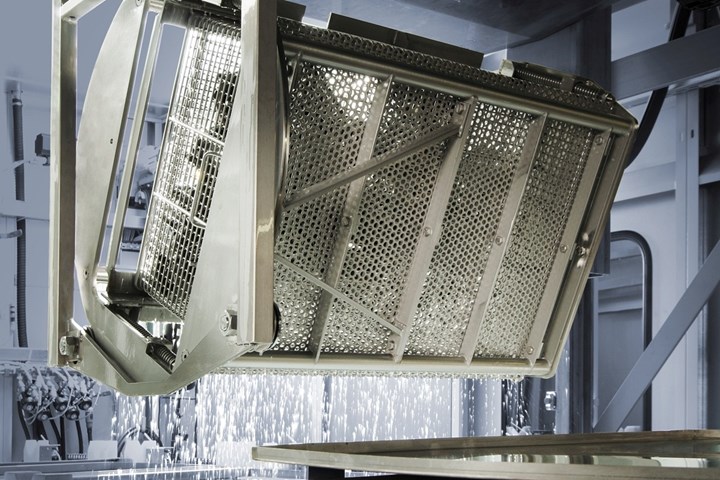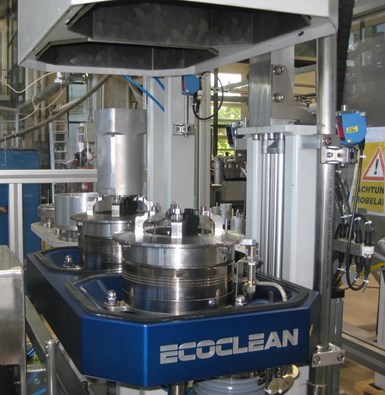EcoClean, a supplier of industrial parts cleaning and surface treatment solutions, says parts cleaning has become a critical manufacturing step in all industry sectors. Proper parts cleaning must reproducibly meet particulate and film-type cleanliness specifications, while at the same time must be done at the lowest possible cost and in a sustainable manner. According to EcoClean, these contradictory requirements call for processes and machines tailored to specific needs.
Throughout industry sectors, components of metal, plastic, ceramic and composite materials are manufactured and processed using very different manufacturing technologies. Although the parts are manifold, they have one thing in common: to ensure the quality of processes such as machining, heat treatment, coating, bonding and assembly, as well as lasting functionality, they necessitate cleanliness levels in line with requirements. In many areas, ever higher requirements concerning particulate and film-type cleanliness must be met. And there are often added challenges such as high throughput rates and weights, a strongly varying range of parts to be cleaned, short delivery times and small margins.
EcoClean says that byy integrating two cleaning processes into one system, such as wet-chemical and low-pressure plasma cleaning, quality, cost and cycle times can be optimized. Photo Credit: EcoClean
As a supplier of solutions for industrial parts cleaning, EcoClean says it covers the complete range of wet-chemical procedures. Cleaning processes and systems for batch or single-part cleaning can be carried out with the following factors taken into consideration: material, size, geometry and weight of the part, type and quantity of contaminants, downstream processes and the resulting cleanliness specifications and throughput requirements. On this basis, EcoClean says it determines whether the contaminants can be removed most effectively with a water-based detergent, an environment-friendly solvent or a modified alcohol with lipophilic and hydrophilic properties.
Dry cleaning methods such as vacuum air cleaning can be integrated into assembly lines and used for depowdering of additively manufactured parts. Photo Credit: EcoClean
To minimize the cost per cleaned part, EcoClean says it adapts the following application-specific treatment technologies as required: spray, high-pressure, immersion, ultrasonic and plasma cleaning, vapour decreasing, injection flood washing, deburring, pulsated pressure cleaning (PPC) and passivation/preservation processes.
EcoClean says it uses a combination of these cleaning procedures to achieve the cleaning results and durations for the specific parts. For example, the PPC procedure in combination with an aqueous or solvent-based immersion cleaning can reliably and quickly remove contamination from small cavities. In the case of complex and bulk parts, spray processes and injection flood washing reportedly deliver improved cleaning results and shorter process times in solvent cleaning processes.
Quality and cost can be optimized, according to EcoClean, by combining processes that formerly required several machines into one single cleaning system. Chamber machines designed for solvent-based or aqueous batch cleaning with a subsequent low-pressure plasma process are one way this is done. This method is said to effectively and efficiently prepare the part surface for a subsequent coating or bonding. EcoClean also offers the respective solutions for deburring and cleaning of single parts — for example, hydraulic and motor components in one system.
The combination of high-pressure water jet deburring and low-pressure part cleaning processes enables efficient and automated processing of single parts, for example hydraulic components, in conveyorized manufacturing lines. Photo Credit: EcoClean
Cleaning tasks also change along with changing manufacturing and joining technologies. According to EcoClean, focus increasingly lies on dry-cleaning processes for removing film-type contamination from joint surfaces in a pinpointed manner, cleaning electronic components and assemblies, removing powder residues from additively manufactured components or cleaning integrated in assembly.
For these and many other applications, EcoClean says it has developed a special toolbox for cleaning processes with atmospheric pressure plasma, laser, CO2 snow, conditioned vacuum air, as well as saturated and dry water vapor. These tools can be applied alone or in combination, depending on the application.
Read Next
Episode 45: An Interview with Chandler Mancuso, MacDermid Envio Solutions
Chandler Mancuso, technical director with MacDermid Envio discusses updating your wastewater treatment system and implementing materials recycling solutions to increase efficiencies, control costs and reduce environmental impact.
Read MoreEducation Bringing Cleaning to Machining
Debuting new speakers and cleaning technology content during this half-day workshop co-located with IMTS 2024.
Read MoreA ‘Clean’ Agenda Offers Unique Presentations in Chicago
The 2024 Parts Cleaning Conference, co-located with the International Manufacturing Technology Show, includes presentations by several speakers who are new to the conference and topics that have not been covered in past editions of this event.
Read More



















.jpg;maxWidth=300;quality=90)



